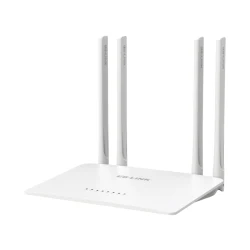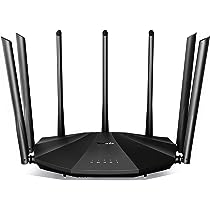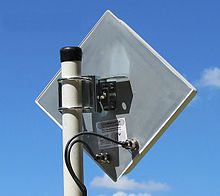The mere mention of MIMO technology is enough to send a shockwave down the spine of wireless communication industry professionals. Why? Because this revolutionary technology has completely changed the game by improving data transfer rates, enhancing network coverage, and increasing overall system capacity. How does it do this? By using multiple antennas in MIMO systems which allow for spatial diversity techniques to be employed. This baffling concept improves signal quality and reduces interference resulting in better data rates and increased reliability.

It’s not just that though! The use of antenna systems in MIMO enables something called spatial multiplexing – an enigmatic technique used to increase data rate by transmitting multiple streams simultaneously through different antennas. Are you keeping up so far? Good because this technique allows for more efficient use of available bandwidth, resulting in higher throughput.
But wait, there’s more! 4G LTE networks have harnessed these benefits by incorporating multiple spatial streams into their systems using MIMO spatial multiplexing techniques. It’s like trying to wrap your head around a mathematical equation but once you get it…WOW! By employing this method, 4G LTE networks can achieve higher data rates than traditional single-antenna technologies.
However, the future holds even more perplexing possibilities with massive MIMO technology on the horizon – utilizing a large number of spatially distributed antennas to improve system capacity even further. Massive MIMO takes advantage of both spatial diversity and spatial multiplexing techniques to provide high-speed connectivity with low latency and improved spectral efficiency…mind-blowing stuff indeed!
Exploring the Benefits of Antenna System in MIMO
Contents
- 1 Exploring the Benefits of Antenna System in MIMO
- 2 How Spatial Diversity Techniques Improve Data Transfer Rates
- 3 Massive MIMO: The Future of Wireless Communication
- 4 Spatial Multiplexing: A Multiplexing Technique in MIMO System
- 5 Enhancing Data Rates with Multiple Spatial Streams in LTE
- 6 The Role of Multipath Propagation in MIMO Wireless Technology
The role of antenna systems in MIMO technology is simply indispensable, as they facilitate the transmission and reception of multiple data streams. The use of multiple antennas at both ends – transmitter and receiver – can significantly enhance wireless communication by amplifying data rates, mitigating interference, and augmenting signal quality. However, Massive MIMO takes it to a whole new level! This avant-garde technique leverages hundreds or even thousands of antennas for transmitting and receiving signals simultaneously.

Spatial multiplexing is yet another sophisticated approach that comes in handy while dealing with MIMO systems. It involves sending different data streams on separate spatial paths using diverse transmit antennas. Spatial multiplexing guarantees an overall surge in the data rate by multiplying spectral efficacy without compromising on reliability. In addition to this, spatial diversity techniques such as Alamouti coding are also deployed to improve data transfer rates via redundancy.
LTE networks have recently adopted multiple spatial streams to boost their performance levels concerning data rates; this feat can be accomplished through either beamforming techniques or spatial multiplexing. Beamforming facilitates directional transmission towards specific receivers, whereas spatial multiplexing allows for simultaneous transmission across various channels using different antennas. These advanced methodologies increase LTE network capacity while providing better coverage and enhancing user experience with higher speeds – talk about groundbreaking innovation!
How Spatial Diversity Techniques Improve Data Transfer Rates
The utilization of spatial diversity techniques is absolutely paramount when it comes to enhancing data transfer rates in wireless communication systems. One such technique, the Massive MIMO, employs multiple antennas at both ends of the transmission link. The number of transmit antennas can be augmented to amplify the amount of data that can be transmitted simultaneously while raising the number of receive antennas diminishes interference and augments throughput.
Another spatial diversity technique worth mentioning is Spatial Multiplexing – a technique that leverages multiple streams to send discrete parts of a message over separate paths concurrently. This multiplexing method enables more competent use of existing bandwidth as it allows numerous users to share frequency bands without impeding one another.
Multipath propagation also plays an indispensable role in spatial diversity techniques since it permits signals to reach their destination through multiple paths. Multiple Input Multiple Output (MIMO) technology exploits this characteristic by employing multitudinous antennas on either end of a transmission link which enhances signal quality while diminishing errors caused by fading or interference due to obstacles like buildings or trees. All things considered, these techniques enable wireless communication systems to attain higher data transfer rates and heightened dependability for various applications ranging from mobile devices all the way up industrial automation systems.
Massive MIMO: The Future of Wireless Communication
The enigmatic future of wireless communication lies in the hands of Massive MIMO technology. This technological advancement employs multiple antennas at both ends, allowing for signal processing capabilities that can elevate data transfer rates to new heights. The utilization of a greater number of spatial streams enables Massive MIMO to provide unparalleled multiplexing gain when compared to traditional MIMO systems.
A paramount benefit of this innovative technology is its ability to augment the signal-to-noise ratio (SNR) through transmit diversity techniques. By reducing interference caused by reflections or obstacles present within an environment, overall network performance sees a significant improvement. Furthermore, with its increased quantity of spatially multiplexed antennas, Massive MIMO has the potential to support more users simultaneously within a given frequency band.
As 5G NR networks approach their debut on the scene, Massive MIMO will likely play an essential role in providing high-speed connectivity for various applications such as virtual reality and autonomous vehicles. Multiple transmit antennas paired with advanced beamforming algorithms will enable access points to better serve devices located far away or experiencing poor signal quality due to environmental factors like buildings or trees. In sum, it’s crystal clear that Massive MIMO technology will continue shaping wireless communication in ways we have yet to fathom fully.
Spatial Multiplexing: A Multiplexing Technique in MIMO System
Spatial multiplexing, a perplexing yet ingenious technique in MIMO technology, is capable of transmitting multiple data streams via a single antenna. This bursty approach enhances the network’s capacity and data transfer rate, measured in bits per second. Spatial multiplexing achieves this by utilizing diverse receive antennas at the receiver end.
The number of receive antennas determines how many distinct data streams can be transmitted concurrently using spatial multiplexing. For instance, two different data streams can be sent simultaneously over the same frequency band if there are two receive antennas. This results in an increase in throughput and efficiency for cellular networks.
In contrast to time division multiplexing (TDM) or frequency division multiplexing (FDM), where each user gets access to the entire frequency band or time slot for a specific duration, spatial multiplexing divides up the available bandwidth into separate channels for each user. The transmitter and receiver use beamforming techniques that baffle even experts to direct signals towards their respective antenna arrays while maximizing signal strength and minimizing interference between different users’ transmissions.
Overall, spatial multiplexing is an indispensable technique in MIMO wireless technology as it enables higher data rates without requiring additional spectrum or power resources – a true enigma! By leveraging diversity among multiple antennas, it helps improve network performance while reducing costs associated with deploying additional infrastructure equipment such as base stations or repeaters – truly mind-boggling!
Enhancing Data Rates with Multiple Spatial Streams in LTE
LTE networks have brought about a seismic shift in the way wireless data is transmitted, thanks to groundbreaking technologies like spatial multiplexing. This technique, also known as multiple spatial streams, involves using an array of antennas at both the transmitter and receiver ends to simultaneously transmit parallel data streams. The result? An explosion in information that can be transferred over a single channel!
Now, when it comes to SIMO (single-input-multiple-output) systems, there’s only one antenna used for transmission while multiple ones are engaged for reception. But with MIMO systems – brace yourself! – several antennas come into play on both ends of communication. These create multiple pathways between them which not only improve signal quality by reducing errors caused by pesky multipath propagation but also provide much-needed receive diversity.
It’s no wonder then that MIMO technology has become one of the most promising wireless advancements today since it boosts spectral efficiency and overall network performance. By harnessing the power of multi-antenna transmission and receiving signals from different angles simultaneously, MIMO channels offer an insight into how wireless communication functions in challenging environments such as bustling urban areas where interference could scupper your signal strength.
All things considered, enhancing data rates with multiple spatial streams in LTE networks has never been more vital than today because mobile devices are increasingly relied upon for daily activities such as streaming videos or browsing bandwidth-heavy websites without any hiccups whatsoever!
The Role of Multipath Propagation in MIMO Wireless Technology
The transmission of signals between two points can be a perplexing affair, especially when multipath propagation comes into play. This phenomenon occurs when signals encounter a multitude of different paths due to factors such as reflections, diffraction or scattering. In the realm of MIMO wireless technology, these diverse paths are harnessed to improve data transfer rates.
Enter time division multiplexing (TDM), which enables the simultaneous transmission of multiple data streams over the same frequency band in MIMO systems. Through clever beamforming techniques, each stream of data can be directed along specific paths for maximum efficiency and bandwidth utilization. Yet this strategy requires pinpoint accuracy in channel state information and may suffer from noise interference.
For successful communication free from errors in MIMO systems, it is vital to maximize error-free transmission rate while maintaining high hertz bandwidths by optimizing spatial diversity techniques and TDM strategies. With effective management and optimization of multiple paths connecting various devices to networks, there lies untapped potential for improved performance across industries thanks to MIMO wireless technology.


